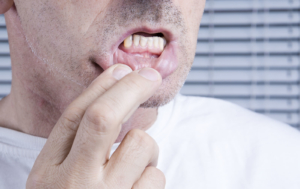A dead tooth is one whose nerve cells are dead hence no blood flows through it. Dead tooth is indicators of other underlying tooth issues such as decay or trauma. They have a dark brown or black colour interfering with your teeth aesthetics. Most people do not realize that they have dead tooth until their dentists tell them so. The tooth is made up of 3 part, dentin, enamel and pulp. The pulp area is rich in nerve endings and blood vessels.
It is these nerves and blood vessels that cause a tooth to die when they die since blood can no longer flow through them into the teeth.
Symptoms of dead tooth
While it is not possible to declare a tooth dead on your own, a dentist having performed x-rays and other tests can confidently state whether the tooth is dead or not. There are two main symptoms associated with dead teeth which you can watch out for.
Pain
– Dead tooth can cause excruciating pain. In some instances however, the pain may be non-existent. The excruciating pain is normally associated with dying nerves or infection on the tooth. The bacteria from the dead nerves exert pressure on the surrounding periodontal membrane which results in pain. If not addressed in time, the infection can develop into abscess causing bad taste, odour and swelling of the gum.
Change in colour from white to yellow, black or grey
– Dead tooth can be characterized by a dark discoloration of the tooth usually yellow, brown or grey. A visit t the dentist should rule out other causes of tooth discolouration and further determine if the tooth is indeed dead.
Causes of dead tooth
Decay – Tooth decay begins on the enamel which is the outer part of the tooth and slowly spreads towards the pulp. If not treated, it penetrates the pulp creating an entry point for bacteria. Once in the pulp, the bacteria will harm the nerves and blood vessels causing their death.
Trauma – Physical impact on the tooth as a result of sporting activities or a knock can cause your blood vessels to burst. The consequences of the trauma may not be evident immediately but with time, you will begin to bear the symptoms of dead tooth.
Treatment of dead tooth
Tooth removal – If the damage to the tooth is extensive and not treatable, root extraction is the best solution to curb infections from spreading to the other teeth. It is usually a simple and affordable procedure. If need be, the client can have implants or crowns fitted into the extracted tooth.
Root canal – If there is a chance that the tooth can be salvaged, a dentist will advocate for a root canal procedure. It involves the clearing of infection and bacteria within the tooth and root before sealing the tooth. Though effective, the root canal is a series of treatment requiring several visits to the dentist before it is complete.
Conclusion
A dead tooth can remain functional even in their state. However, if there are any infections within the tooth, prompt treatment is paramount to prevent the infection from spreading to your other teeth. Besides the symptoms, a tooth can only be certainly declared dead through further examination form your dentist. If you exhibit any of the symptoms above, visit your dentist for proper diagnosis and treatment.


